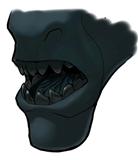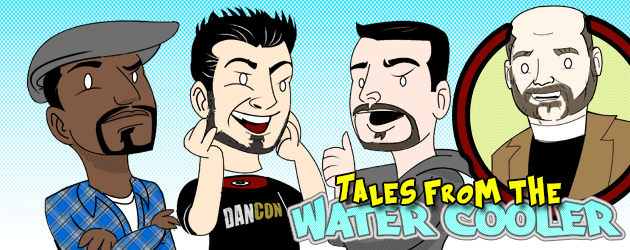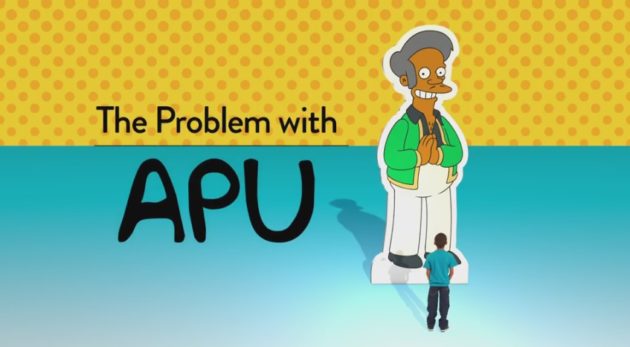Welcome back to Touring the Cosmos! On the last segment, we had a good look at the universe of Carpe Chaos and what it is all about. Now some of the boys, Jason Bane and Eric Carter of Carpe Chaos, have been kind enough to answer a few questions about the Carpe Chaos universe, and a bit of the process that goes into making these great web comics.
ComicAttack: When you guys decided to get into this medium, why did you choose the web comics route and not the more traditional “straight to print” method?
Eric Carter: When you’re trying to distribute a comic you find yourself at a crossroads. In one direction, a group of dwarven miners has just blasted a new pass through the Mountainous Internet directly to the Village of Your Audience. In the other direction, a winding path leads through the Forest of Fixing Your Layouts, which leads to the Marsh of Muddy CMYK, and eventually winds through the vast Desert of Finding A Distributor, and hopefully eventually arrives at the Village of Your Audience. The choice was really an easy one, even if it’s not quite as well traveled. When we started, going to print wasn’t something we thought we could achieve, so we didn’t even consider it. Now that we’ve found some success on the web, getting our comic into print is a much less harrowing task.
Jason Bane: For me, it was the desire to keep creative control by self-publishing that led me to the web, and the Internet is by far the easiest way to publish your own work! “Direct to print” may be more traditional, but more and more people are using the Internet to get their stuff out and become known. I read on Wikipedia the other day that there are something like 38,000 webcomics, with more appearing every day. Most are of the newspaper-strip variety, but there plenty of longer-format graphic novels on the web too: reMIND, Elspeth, Amya, and Furious Comics come to mind as other examples of online graphic novels that are looking for an audience online before producing printed versions of their comics. We recently printed a small run of our first book (a collection of our first seven stories) to sell at conventions, but without an established readership I doubt any print distributors will be interested in our comics.
the web, and the Internet is by far the easiest way to publish your own work! “Direct to print” may be more traditional, but more and more people are using the Internet to get their stuff out and become known. I read on Wikipedia the other day that there are something like 38,000 webcomics, with more appearing every day. Most are of the newspaper-strip variety, but there plenty of longer-format graphic novels on the web too: reMIND, Elspeth, Amya, and Furious Comics come to mind as other examples of online graphic novels that are looking for an audience online before producing printed versions of their comics. We recently printed a small run of our first book (a collection of our first seven stories) to sell at conventions, but without an established readership I doubt any print distributors will be interested in our comics.
CA: I noticed that there are a variety of people credited throughout the different issues. How is it decided who draws/writes particular issues?
JB: Eric has a hand in just about all of our stories and scripts, and I’m credited as a writer when I contribute more than just corrections and fine-tuning. We have more than 60 stories in various stages of development, and as we decide which stories should come next we develop them into scripts. We distribute the comic scripts to different artists based on whose style will best fit the story (and who’s available at the time). All of our stories so far have each been drawn and painted by a single artist.
EC: Generally we all screw around until the last minute, until one of us realizes it’s due tomorrow and cranks it out as quickly as they can while the others are sleeping. Sometimes after it’s supposed to be done we nitpick each other and “provide feedback”.
CA: Are you guys all local to each other, or is it a long distance deal? How does this affect the creation process?
EC: We are all local to North America. Although this wasn’t always the case. 
JB: We are all local to one another because we all use the Internet! Eric lives near Los Angeles while I live near San Francisco, and our artists are in other states and Canada. It’s hard sometimes because we can’t draw out quick sketches and show them to each other, but we’ve got a pretty good system down. We use a private forum that tracks the development of each comic, and we upload images and collaborate that way. The upside is that it’s automatically organized and we’ve got good records of the creation process of each comic. It’s funny, I’ve worked with artists for years before even talking to them on the phone. That part always strikes me as a little crazy, but it works.
CA: A new issue of Carpe Chaos is released on the 1st of every month. Is it hard to keep up with this deadline?
JB: Yeah, but it’s getting easier. We’re starting to get ahead. If you look back through the news posts on CarpeChaos.com announcing the release of each comic, you can see which news posts are date-stamped right at midnight (Pacific time), and which are a few hours later. The ones that say 1:06AM, 3:26AM… Those were the ones we were scrambling to finish!
EC: This summer it’s been crazy hectic because we’ve been working on a lot of additional projects: our launch, several conferences, t-shirt designs, posters, a website refresh, our first book, and a few other, smaller things. We’ve had to choose which stores we’re telling first based on that schedule, but we haven’t missed a deadline yet. Things are slowing down now and we’ve been able to build up a buffer so it won’t be so down to the wire in the future.
CA: How many installments do you plan on this series going? How long do you anticipate it will take to get there?
JB: Rising Up, our first multi-chapter story, will most likely run for four chapters. We’ve got another story in the works that will be three or four chapters long, and several more one-chapter story scripts ready to go. Currently, the plan is to continue forever! We’re having a blast creating these comics.
EC: Till I get bored of it, which will probably be shortly after it jumps the shark, at some point after we grow a beard.
CA: Your alien species are pretty unique. Where do you draw the inspiration for their designs?
EC: From all sorts of animals, and a lot from engineering. Sometimes we just think a lot about other ways of doing biology, or how to cope with strange environments like the oursals (rocks) orbiting a gas giant, and then design bodies based off of that. Thinking about physiology in terms of function produces some unique stuff.
CA: What goes into each species’ background, history, culture, etc? How much thought is put into each race?
EC: Our documentation of the Carpe Chaos universe is over 1000 pages printed. In addition to that we have several gigs of concept drawings and model sheets. It goes down to some pretty fine details, for instance, the what the inside of a Kaean’s mouth looks like. We have extensive articles on all our races’ technology, history, government, and religion.

CA: Why no humans?
JB: My main motivation in not including any human characters was because we don’t want our audience to immediately identify with one species more than another. Each alien race has its own personality, but within each race there are a wide variety of characters. Each race has its own “good guys” and “bad guys”, and we want each reader to choose their own favorite species and characters. If humans were a part of the Carpe Chaos universe, I think most readers would immediately side with them, and they would worry about human characters more than the alien ones. Without a familiar group to identify with, potential bias is removed and each reader is more likely to think critically about who’s right and wrong in the conflicts that come up in our stories. Encouraging critical thinking is definitely one of our goals with Carpe Chaos.
EC: Cause nobody wants to play Humans in video games, so why would they want to read about them in comic books?
CA: So far we have seen three races, the Kaeans, Porg, and Turikasuul. Any hint as to what the others might look like/be about?
JB: We have five main races, and several more minor races. You’re right: the three main races that we’ve revealed so far are the Kaeans, the Porgs, and the Turikasuul. The fourth main race is the Xotron; we’ve mentioned them by name in a couple of stories so far and Strength in Numbers shows one of their spaceships at the end. Xotron use crystals in most of their technology, and that spaceship is a good example of what that looks like. Other than that, no hints! 
EC: Now it wouldn’t be fun if we gave away all the secrets. 
- Militant Overgrown Mice
- Lava Worms
- Pacifist Trees
- Gunslinging Mushrooms
- The Pyro From TF2
- Flying Crustaceans
- Samurai Jaguars
- Teleporting Rock Golems with a penchant for techno music
EC: Yes, actually the universe’s expansion is accelerating. But you should thank Dark Energy for that one, not me.
mike@comicattack.net




Pingback: Touring the Cosmos: Carpe Chaos’s Kickstarter Campaign!